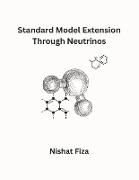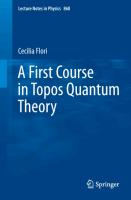- Start
- Standard Model Extension Through Neutrinos
Standard Model Extension Through Neutrinos
Angebote / Angebote:
In 1914, Chadwick demonstrated that the ¿-spectrum was continuous, in contrast to ¿- and ¿-rays which were unique in energy. This led to a doubt regarding the principle of conservation of energy. Meitner later demonstrated that the missing energy could not be ascribed to neutral ¿-rays, which led to the idea that the missing energy could be explained by the existence of a new particle. Also, in the case of beta decay the mass number remains unchanged, so, the change in nuclear spin should have been integer. But the electron is a spin-half particle and the question of unaccounted spin arise. In order to propose a solution to the missing-energy problem and also as a remedy to the problem of spin-statistics in ¿-decay, Wolfgang Pauli presented in his open letter, the idea of the existence of a neutral weakly interacting fermion emitted in ¿-decay. Thus the history of the neutrinos started with this famous letter by Pauli on 4th December, 1930 [1], addressed to "Dear Radioactive Ladies and Gentlemen"! The term neutrino was coined later by Enrico Fermi [2]. Later Fermi expanded upon his idea to publish a famous theory on ¿-decay [3, 4], known as the Fermi theory. In the weak interaction according to Fermi, neutrons decay to protons via a non-renormalizable four-fermion interaction, n ¿ p + e¿ + ¿¯ where ¿¯ is the electron antineutrino. Fermi's theory predicts that the inverse reaction p + ¿¯ ¿ n + e+ occurs with the same interaction strength and it could be used to observe neutrino scattering in real life. Fermi's theory was later expanded by Gamow and Teller in 1936 [5] to include axial-vector currents in a way that parity was still conserved since the concept of parity violation was unthinkable at that time. It was later realized that other couplings such as scalar, pseudoscalar, and tensor couplings could also participate in weak interactions. After the discovery of muons, the observation of
Folgt in ca. 10 Arbeitstagen


